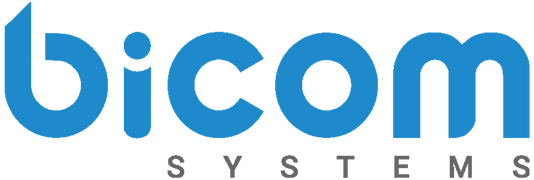Probably the question that is not asked but always answered when making an introduction of Bicom Systems’ Products is the one in this title.
With so many pieces it is rather understandable why confusion may arise and yet having explained this many times now, recipients reply unanimously with confirmation that it all makes sense. For this reason it seemed only appropriate to write it down and make some other supporting diagrams and videos that really demonstrate the turnkey nature of all these pieces.
Quite simply, Bicom Systems can deliver the most turnkey telephony company with the most features and functions on the market.
We start with our platform, SERVERware. SERVERware comes in two editions, SERVER Edition and NETWORK Edition. See links for supporting diagrams.
SERVERware provides virtualisation and redundancy. In the SERVER Edition the virtualisation means that many application services can be set on the same server, The Primary Controller. These may include : PBXware MultiTenant or Call Center PBX Editions, TELCOware or other items such as Email Server, Web Site a vanilla Asterisk or Trixbox or FreePBX even. Each is contained within its own Virtual Private Server (VPS) and as such
The Server Edition can then in turn be set to mirrored redundancy, using a Secondary Server, so that should the Primary Controller Server fail the Secondary takes over.
Although similar options exist with VMware, Serverware uses Virtual Servers and so the voice quality is best served by keeping the voice traffic on the CPU rather than in a virtualised manner. Serverware also has added security features such as being set in the CHROOT and ………………..
In the Network Edition, the roles of the original two servers change. Firstly all application services are now present on dedicated hosts. The Controller is then freed to perform two functions: duplicating data from the hosts to its own hard disks and monitoring the hosts that in the event of failure of a host that the services on the lost host will be reallocated to the next available host. As the cluster expands the duplication of data may be performed to a SAN.
The Primary Controller is mirrored to a Secondary Controller so that should the Primary fail the above two functions will continue.
Typically in an ITSP scenario one of the application services in its own VPS will be the Multi Tenant Edition of PBXware. It is here that the core telephony takes place from registrations to enhanced services and telephony billing that rates CDRs.
Then on another VPS may be a Call Centre PBX Edition of PBXware if a customer has a dedicate requirement. Often with Call Centers there is a need to access the MySQL database, run detailed reports and thrash CPU with Call Recordings, as such resource needs to be identifiably dedicated. This way a heavy usage call center can latter be moved to its own resource or indeed even for its component part be split to dedicated servers.
If a provisioning platform such as TELCOware be used then it too will have its own VPS on either the server or network edition of SERVERware. The provisioning starts with the CMS (Content Management Systems) creating a web site where visitor can peruse hard and subscirptions products created in the Shopping Cart Products & Services with a view to ordering. To place orders visitors must sign up and create an Account.
TELCOware does not have any real telephony, everything is virtual. After receiving an order it uses API to send instructions to PBXware to provision the service, registrations, DIDs, IVRs or similar. There are wizards in place to assist with this.
According to the subscription bought it will then generate an invoice at the end of the period which will reflect the subscription and any extra call spend made, drawing CDRs from the switch it is associated with. This could be one or many PBXware or even another system, Asterisk based or not.
Upon the invoice being settled by manual payment or automated with a supported gateway such as worldpay, authorize.net, linkpoint, paypal, skrill … funds will be attributed first to the subscription and then if available to the call spend fund on the telephony account on the associated softswitch.
In addition to these products, Bicom Systems also has a wide variety of supporting Desktop Applications which continue the turnkey theme through to the End User and allowing your ITSP effort to simply have what others do not and stand out from the competition.
Please feel free to look through the supporting material, however nothing quite compares to an online demo and please do ask for Account Manager, the linking piece, to contact you in your language of preference (English, Spanish, French or Portuguese). As well as the architecture there is a whole lot of other advice to be provided and Marketing Materials and Support.
